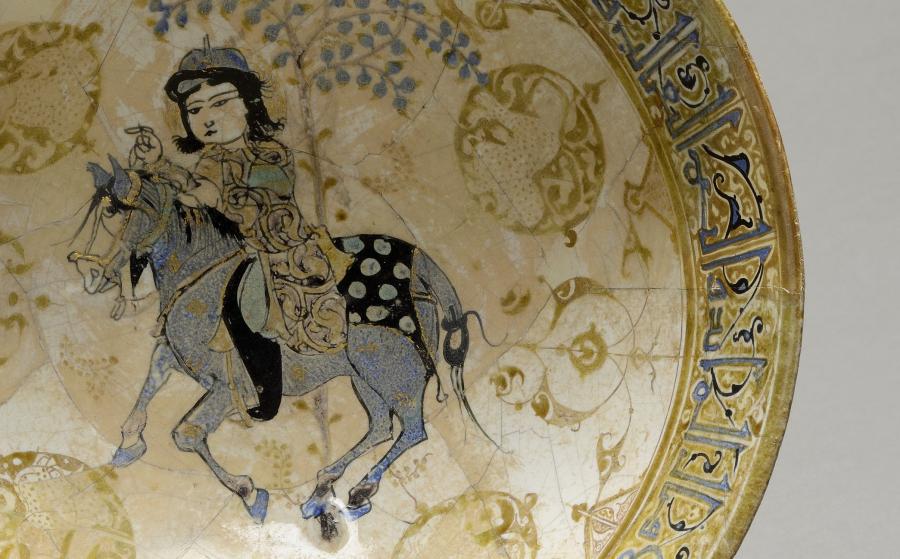Bowl decorated with a horseman
Information sur l’artiste
Kashan, Persia

Coupe à décor de cavalier, 1275-1325.
Image © Lyon MBA Photo Alain Basset
Islamic craftsmen used to base their productions on models from ancient civilisations. Nevertheless, they also created new techniques: this bowl, featuring a horseman with an epigraphic border, is decorated in the Haft rang style – which means "seven-coloured" in Persian. There were indeed seven basic colours: red, white, black, gold green, brown, and blue. This method used the low-fire technique: the coloured decoration was painted onto a pre-fired white or blue glaze, then ceramicists carried out a second firing without exposing the piece directly to the flames.
The Haft rang style of decoration probably took inspiration from contemporary miniatures. This bowl features a horseman passing in front of a bush, surrounded by four medallions, each of which represents a musician. Haft rang pieces, also called Minai, are typical of the items produced in Iran under the Seljuk Empire. They were particularly difficult to produce, which made them extremely expensive and explains why the technique was abandoned at the end of the 14th century.
Kashan, Persia
1275-1325
Siliceous ceramics decorated using ‘low-fire’ technique
H.10.4; Diam.22.4 cm
Inv. E 698





